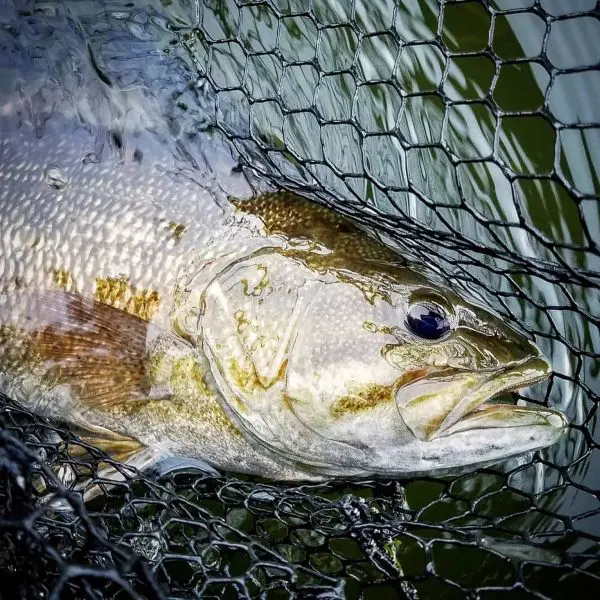Keep a bead on your surroundings and fish poppers for success
When it comes to feeding behavior, smallmouth bass are generalists, and you can catch them a lot of different ways on any given day. Sometimes they will focus on specific forage – for example, crawfish, certain baitfish species, and at some times of the year they’ll start capitalizing on insects, and after a rain, frogs, salamanders, really anything that washes into the river.
Point is, late-summer river smallies can be caught a lot of different ways on different presentations. And you must keep an eye open for preferred habitat and strategize your efforts in high-probability areas.

River Conditions/Time of Day
During late-summer, river levels are generally lower and clearer than earlier in summer. Water temps are still relatively high in the mid-70s into the low 80s on most rivers throughout smallmouth country. But the fish are still going to be active.
Some days, especially if it’s cloudy or crummy, smallies may be active all day, but a lot of times when sunny in late-summer, they’re going to be more active in the morning and afternoon to evening.
Veteran river guide Jay Anglin in the Michigan/Indiana/Illinois corridor and river smallmouth bass expert noted: “River smallies feed on both sight and sound. On most rivers there will be smallies feeding on crawfish around cover at any point in time besides everything else available. Especially this time of year, you really must figure out where they are in terms of depth, shade, and water flow – the fish really seeking out cooler, oxygenated water but are moving around throughout the day for feeding opportunities.”
Anglin continued: “They’re very adaptive. They’ll change gears quickly because they’re not necessarily locked into one food source. It’s not always a match the hatch situation like trout. Whereas trout might be totally focused on a certain mayfly, a smallie will take advantage of the fly hatch, but also switch gears and go chase down baitfish, crayfish, or bugs.”
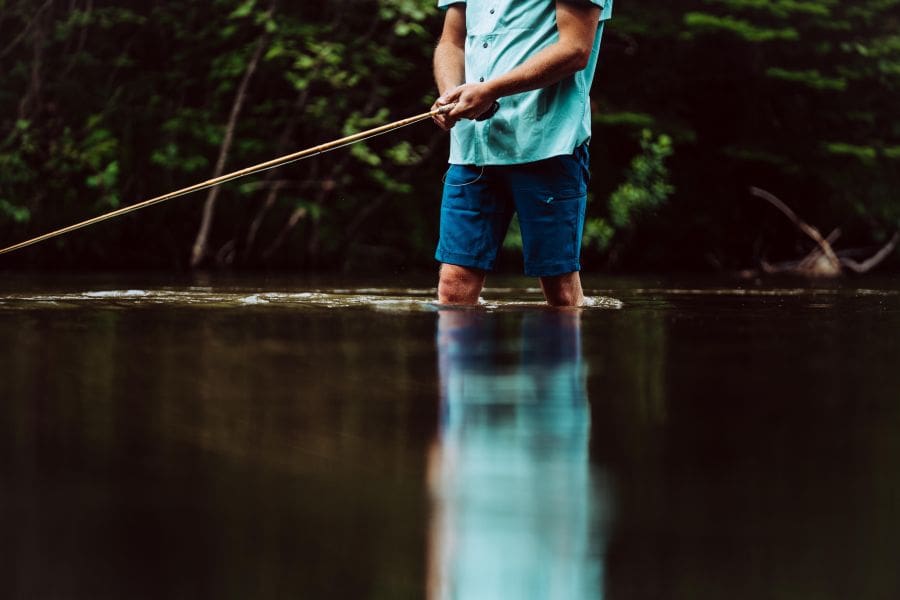
Working Windows For Poppers
As such, river smallies are very inquisitive and will check out sonic-oriented baits, like fly poppers or conventional topwater if it drops right over their head.
Anglin says that fishing on top with either a fly popper like the proven Boogle Bug or a Rapala Skitter Pop on conventional gear works so well in late summer because you don’t have to worry about snags and you get far more casts in.
“While they can work well, too, if you’re throwing a tube jig, crankbait, or streamer, you’re going to run into snags, which decreases your time with your bait in the strike zone and you’re constantly moving the boat to get the lure back and causing a lot of commotion. Fishing poppers really puts stealth on your side.”
Over the past three- to five years, Anglin has noticed river waters running much lower, so there’s also more fish shallow, especially in and out of oxygenated riffle areas near slack water where they might have been deeper in the past.
“Depending on where you are, late-summer fish might be as shallow as 18 inches or so, so if a popper lands over their head, there’s a really good chance they’re going to go for it.”
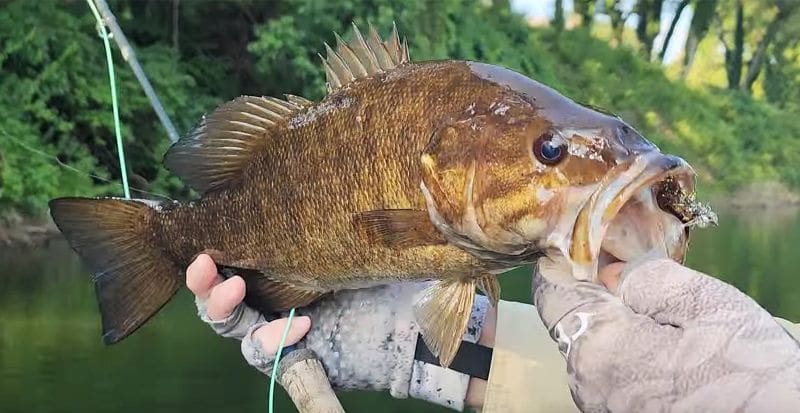
So, whether you employ fly or conventional gear, poppers are great options for late-summer river smallies.
“I think it’s important to start out on the easy side of things, too, which in my case, would definitely be throwing a popper,” said Anglin.
But if the sun is too high and the fish are skittish at grabbing baits from what’s essentially a giant mirror underwater, Anglin will switch to crawfish fly patterns or tubes to get his clients on fish.
“Just this past week, I had a regular client out on the river and the fish weren’t eating poppers. The sun was overhead, and fish were down low in deeper water. So, we switched to a crayfish pattern on a floating line with a long leader and he immediately caught a 17-incher, followed by a 16 and 18.”
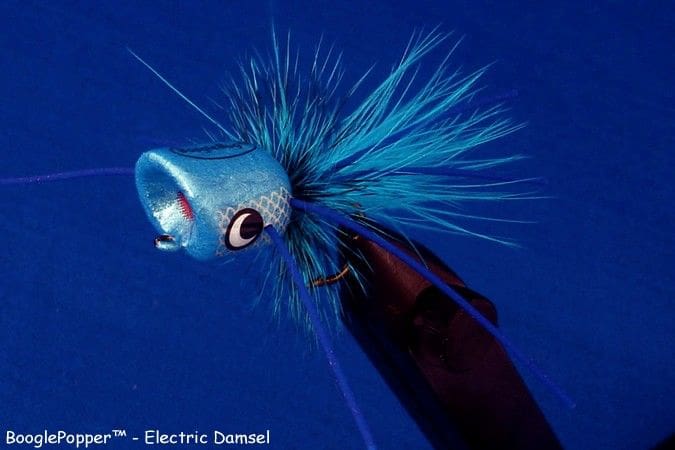
“But later, as the sun started moving behind the trees, fish started moving up in the water column to areas along the bank where they could feed on insects, minnows, and small panfish. I’m always looking for the little blooms of gnats and mayflies along the banks that bring in feeding minnows. The smallies typically follow.”
“The bottom line is the bigger fish started to move up in the column, and that’s when we switched to poppers and that flicked the switch. Suddenly, he didn’t get any on his crayfish and I said, ‘Hey, throw one real shallow and strip it quicker.’ And he threw one right up to the bank about eight inches of water and he stripped it out to about two feet and got smoked.”
“That told us what we needed to know. I handed him another rod that had a Boogle Bug popper on it, and he caught another good fish.”
The point is you must adjust throughout the day with river smallies depending on the sun.
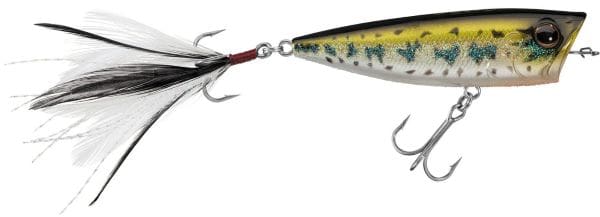

Finding Structure & Shade
Anglin observes: “When you have peak temps like we do right now in the rivers, usually by mid-August at this latitude the sun angle becomes lower. As the sun gets lower on the horizon you can take advantage of topographical features and foliage quicker.”
“While the sun might be overhead until an hour or hour and half before sunset in June and July, this time of year by three or four o’clock in most rivers you can find a bluff or a tall tree line or a high bank or something even a bridge or a levy-style road and take advantage of smallies in the shade on topwaters,” continues Anglin.
Depending on where you are in the country, the key then is to find shade, which could come in the form of boulders and rock piles like in Minnesota and Wisconsin rivers or bridges, sea walls, old railroad trestles, riprap, as well as wood.
“We have fewer boulders in the rivers I fish but we have lots of sea walls and other structure that provides excellent cover for these fish. And in metro settings too, I’m always looking for the decrepit, breaking down stuff that provides nooks, cracks and crannies that draw tons of crawfish, especially with some depth transition around them so the fish just kind of sit off these areas and wait for the food to reveal itself.”
“You could drift or crawl a tube in these areas and mess around with getting snagged or you could pinpoint casts with topwaters right on top and you’ll get smoked. You might start by catching smaller fish but all the commotion on top will bring in the larger fish on subsequent casts or drifts.”
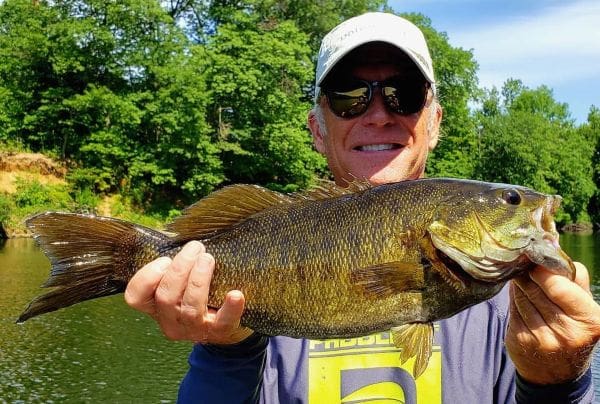
Guide Recommended Gear
- Conventional gear: 6’-6’6” medium-light/medium power, fast action spinning rod with 2500 size reel and 10-lb. monofilament – 2-inch Skitter Pop or favorite popper hardbait
- Fly gear: 9’ 6-wt. rod, Scientific Anglers Amplitude Infinity weight-forward line, 7.5’ 16 lb. tapered leader with 18” to 24” of 10- or 12-pound mono, nylon or fluoro tippet plus Boogle Bug popper
- Whitewater Spindrift Merino Fishing Hoodie for sun protection
- Whitewater Prevail Pant for sun protection
Take-Home
Looking to catch more late-summer smallies? Rather than whipping around a Beetle Spin randomly throughout the river, keep your head on a swivel and get more casts in with topwaters, whether on-the-fly or spinning gear. As a backup, bring a tube rod or some crawfish pattern flies for deeper, mid-day sun fish, but know that if you find the right shade, structure, and food source, a popper is going to simply catch fish in a way that’s explosive and about as fun as it gets!
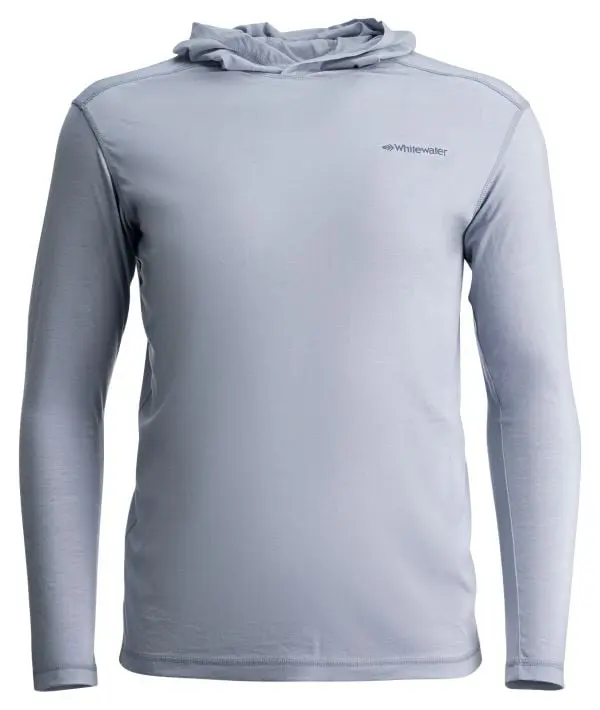
Spindrift Merino Fishing Hoodie
Experience the unparalleled comfort and moisture-wicking prowess of merino wool fused with the familiar lightweight design found in typical polyester sun hoodies on the market, all in our innovative Spindrift Merino Fishing Hoodie. This lightweight merino hoodie has effortless stretch, 50+ UPF protection, and is fully equipped with an oversized sun hoodie. Designed to be your ultimate fishing companion, regardless of the weather or time of year, the Spindrift Merino Fishing Hoodie serves as a versatile layering piece underneath jackets or as a standalone sunshirt. Crafted from the finest merino fibers, measuring just 17.5 microns, blended with the optimal amount of nylon for maximum functionality and durability. Enjoy all the advantages of merino wool with a luxuriously soft touch, exceptional temperature regulation, and long-lasting odor control in a hoodie you can comfortably wear throughout the year.
- Betaspun® yarn featuring 82% 17.5-micron Merino Wool, 16% Nylon, and 2% Lycra helps resist abrasion & pilling
- Lightweight 120g fabric
- UPF 50+ sun protection
- Naturally moisture-wicking & antimicrobial
- Naturally helps to regulate body temperature
- Soft next-to-skin feel and easy to care for
- Built-in hood for added sun protection
- PFAS free
- Flatlock seams for next-to-skin comfort
MSRP $129.99
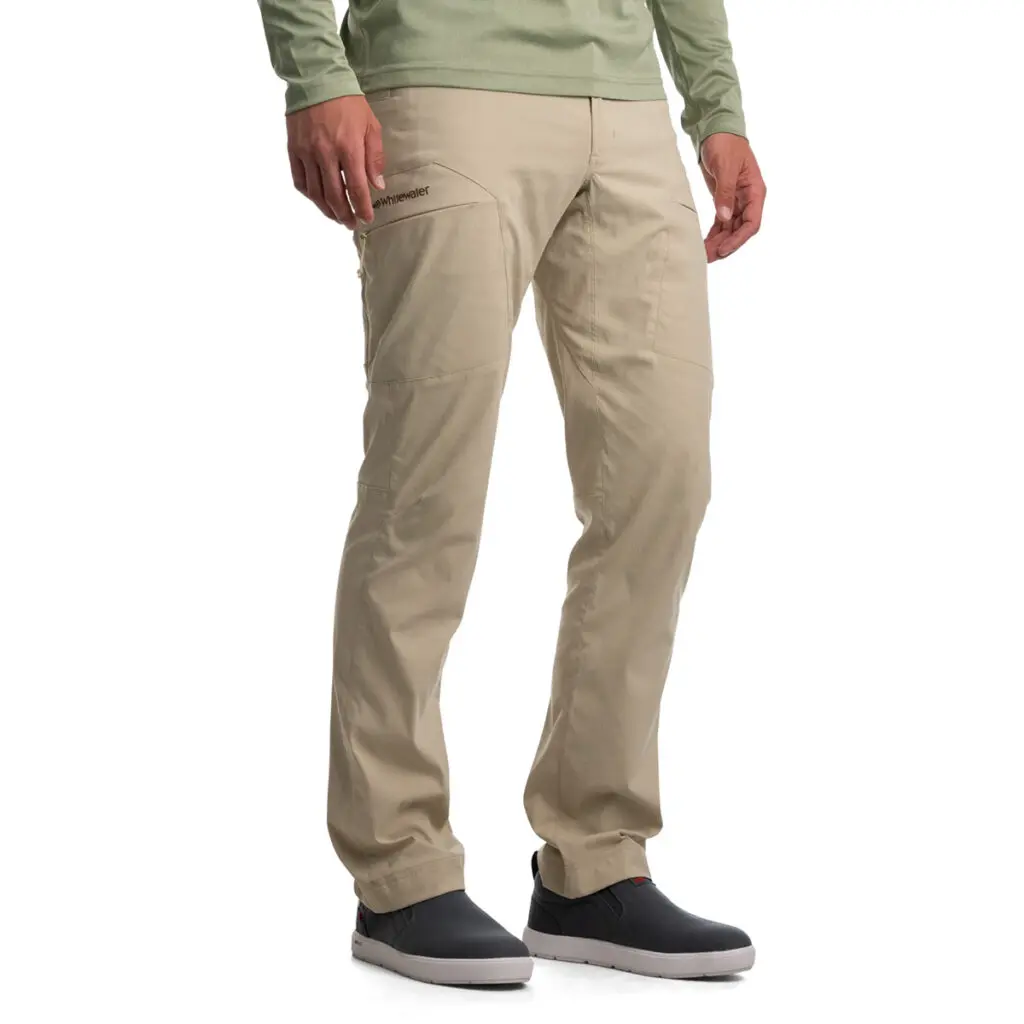
Striking the perfect balance between comfort and durability, these cargo pants feature a modern cut and a nylon/spandex construction that offers just the right amount of stretch for an optimal range of motion. With ample pocket space, including secure zip cargo pockets on the sides, 2 front hand pockets, 2 zippered back pockets, and a knife pocket, they cater to all your essential storage needs. Reinforced stitching and heavy-duty belt loops add to the durability of these pants. Offering optimal moisture-wicking performance, they are also antimicrobial-treated to combat unwanted odors even after hours of wear. The fabric is UPF 50 rated, ensuring you have maximum sun protection.
- Quick-dry nylon/spandex stretch twill fabric for all-day durability
- UPF 50+ sun protection
- Stain resistant & anti-microbial treated for all-day clean comfort
- 7 pockets for storage and warmth (2 front waist, 2 thigh zip, 2 back zip, 1 knife pocket)
- Side seam vent zippers allow for temperature regulation
- Articulated knees & gusseted crotch for mobility
- Prevail pant has a 32″ inseam for regular sizes and 34″ inseam for talls
MSRP $99.99 to $109.99

